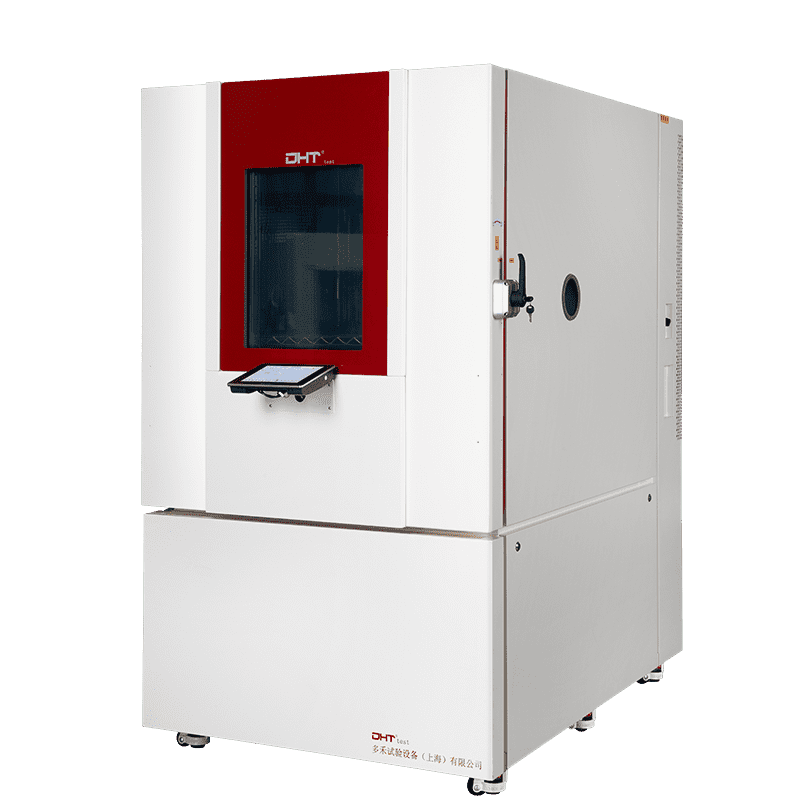Written by Dorothy
Senior Sales Manager, Doaho Test (DHT®)
In high-reliability industries like electronics, automotive, aerospace, and semiconductors, temperature cycling tests play a critical role in validating a product’s environmental adaptability and long-term stability. Compared to traditional environmental test equipment, fast change rate chambers (also known as fast thermal cycling chambers) offer a more accurate simulation of real-world thermal shocks due to their ability to heat and cool rapidly. These chambers have become essential tools in product development, material screening, and quality assurance processes.
However, the very nature of these tests—intensive, frequent, and performance-critical—also makes rapid temperature change chambers one of the most cost-driving components in a testing lab. For R&D and QA departments seeking to balance rigorous testing standards with budget control, the core question isn’t whether to use such equipment, but how to choose and utilize it smartly to maximize both efficiency and return on investment.
This article explores four key dimensions—equipment performance, energy-efficient design, test process optimization, and long-term maintenance strategies—to help enterprises reduce overall testing costs while maintaining reliability.
-
Faster Temperature Ramp ≠ Higher Energy Costs: Choose Efficiency First
There’s a common misconception that higher temperature ramp rates inevitably mean higher energy consumption. While this may have been true in the past, modern test chamber technology has made that assumption outdated. Today’s high-performance rapid temperature change chambers are designed to achieve fast transitions without excessive energy drain.
Systems that integrate variable frequency compressors with smart PID control algorithms can dynamically adjust output based on real-time temperature feedback and thermal load, avoiding energy overshoot and waste. Furthermore, heat recovery systems now allow chambers to reclaim heat during cooling cycles and reuse it for subsequent heating phases. This “thermal recycling” significantly reduces electricity consumption without compromising performance.
Recommendation: Look for units with certified energy-efficient designs, integrated heat recovery systems, and intelligent energy management controls. These features not only reduce operational costs but also support sustainability goals.
-
Faster Testing = Faster Time to Market = Lower Time-Related Costs
One of the biggest benefits of rapid thermal cycling is the ability to compress the validation timeline. Traditional thermal chambers with ramp rates below 3°C/min can take days—or even weeks—to complete a testing cycle. In contrast, high-performance chambers that achieve 10°C/min or faster can often complete a full cycle (e.g., −40°C to +85°C) within 30 minutes.
Consider the qualification process for a high-reliability automotive-grade chip, which typically requires 500 cycles under JESD22-A104 standards. Using a standard chamber at 5°C/min might result in hours per cycle and extend the entire test process significantly. A fast-change chamber operating at 15°C/min can dramatically cut cycle times and reduce the overall test duration by more than half.
This time saving translates directly into labor cost reductions, better equipment availability, and—most importantly—an accelerated product launch. The ability to meet market windows or get ahead of competitors can outweigh the upfront cost of the equipment itself.
-
Smart Layouts and Batch Planning: Drive Down Per-Unit Costs
When testing multiple samples in one chamber, poor placement or loading strategies can lead to temperature inconsistencies, which in turn jeopardize data validity and waste testing resources.
To optimize batch testing:
-
Maximize Chamber Space: Choose chambers with optimized airflow design and high temperature uniformity (±2°C or better), so you can increase sample density without compromising test integrity.
-
Sensor Placement Matters: Conduct both loaded and unloaded thermal mapping (in accordance with standards like GB/T 10592 or IEC 60068) to identify the most representative monitoring points. This avoids false pass/fail results due to poor sensor positioning.
-
Group Samples Wisely: Align batches based on similar performance specs, identical manufacturing processes, or development stages. This minimizes test variability, improves data comparability, and reduces the need for repeat testing.
In essence, maximizing the utility of every test run is the key to lowering the cost per sample.
-
Preventive Maintenance: Control Long-Term Ownership Costs
High-speed thermal cycling puts significant stress on mechanical components—compressors, circulation fans, lift mechanisms, and more. Any unplanned downtime caused by a failure can result in lost test time, delayed projects, and even contractual penalties.
Key features to look for:
-
Modular Design: Equipment with modular components allows for quicker repairs and reduced downtime.
-
Remote Diagnostics and Live Monitoring: Enables predictive maintenance and early detection of component wear.
-
Robust Support and Warranty: Choose vendors that offer long warranty terms and rapid local support, reducing maintenance risks and unplanned expenses.
Internally, companies should implement regular preventive maintenance plans, including:
-
Cleaning condensers
-
Inspecting and replacing door gaskets
-
Lubricating moving parts
-
Monitoring refrigerant pressures
-
Verifying electrical connections
Proactive upkeep not only extends equipment life but also ensures test reliability and reduces long-term operational costs.
Final Thoughts: Efficiency Isn’t About Cutting Corners—It’s About Making Smart Investments
Cost reduction should never come at the expense of testing integrity. Leading companies understand that the right rapid temperature change chamber—one that combines reliable performance, fast response, and high energy efficiency—can yield substantial long-term savings and improved operational agility.
For organizations committed to speed, precision, and quality, investing in the right test system isn’t just a capital expense—it’s a strategic move that strengthens every stage of product development. From selection and usage to upkeep and optimization, every detail offers an opportunity to cut waste and increase value. The key is to approach it with data, discipline, and the right mindset.


